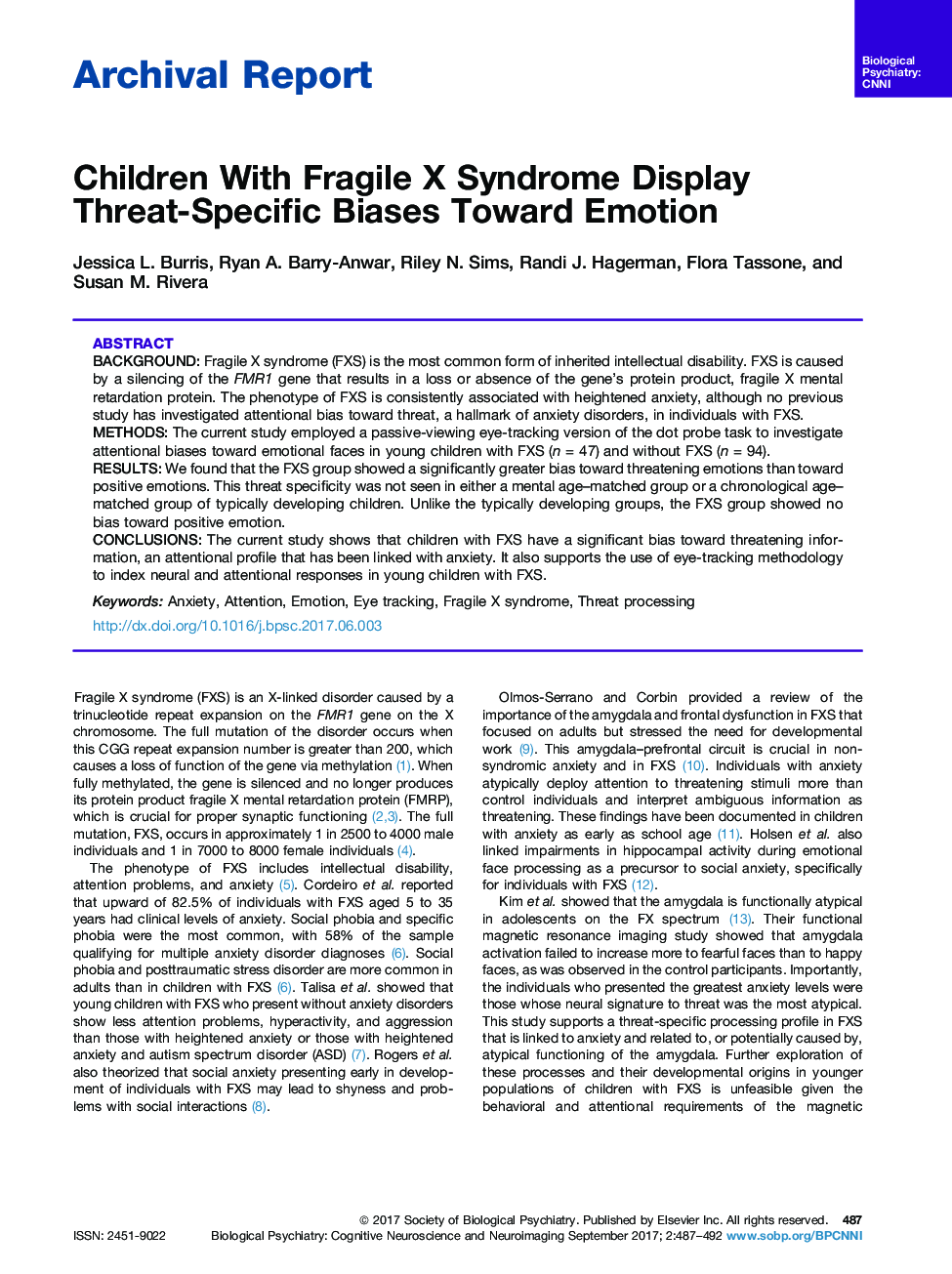| Article ID | Journal | Published Year | Pages | File Type |
|---|---|---|---|---|
| 5721083 | Biological Psychiatry: Cognitive Neuroscience and Neuroimaging | 2017 | 6 Pages |
BackgroundFragile X syndrome (FXS) is the most common form of inherited intellectual disability. FXS is caused by a silencing of the FMR1 gene that results in a loss or absence of the gene's protein product, fragile X mental retardation protein. The phenotype of FXS is consistently associated with heightened anxiety, although no previous study has investigated attentional bias toward threat, a hallmark of anxiety disorders, in individuals with FXS.MethodsThe current study employed a passive-viewing eye-tracking version of the dot probe task to investigate attentional biases toward emotional faces in young children with FXS (n = 47) and without FXS (n = 94).ResultsWe found that the FXS group showed a significantly greater bias toward threatening emotions than toward positive emotions. This threat specificity was not seen in either a mental age-matched group or a chronological age-matched group of typically developing children. Unlike the typically developing groups, the FXS group showed no bias toward positive emotion.ConclusionsThe current study shows that children with FXS have a significant bias toward threatening information, an attentional profile that has been linked with anxiety. It also supports the use of eye-tracking methodology to index neural and attentional responses in young children with FXS.
